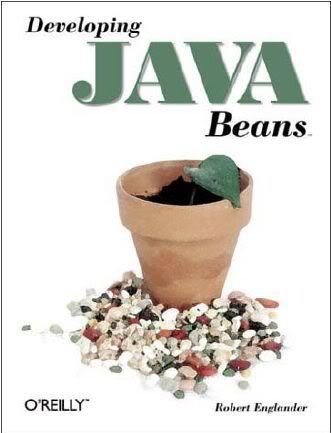martes, 22 de abril de 2008

JavaBeans is one of the most important developments in Java™ since its inception. It is Java’s
component architecture, which allows components built with Java to be used in graphical
programming environments. Graphical development environments let you configure components by
specifying aspects of their visual appearance (like the color or label of a button) in addition to the
interactions between components (what happens when you click on a button or select a menu item).
This means that someone can use a graphical tool to connect some Beans together and make an
application without actually writing any Java code—in fact, without doing any programming at all.
Developing an application isn’t necessarily a matter of producing thousands of lines of code that can
only be read by computer professionals. It’s more like working with Lego blocks: you can build
large structures using snap-together pieces. The result is that applications can be created by people
who are good at designing user interfaces and aspects of the interaction between the user and the
computer. The guts of an application can be written by software developers, who are great at
coding, but not necessarily good at understanding users. This is how it should be, and in fact how it
is in many other industries. The engineer who designed the engine of your car is certainly not the
same person who designed the interior. JavaBeans allows us to make the same kind of distinction in
the software business.
As Beans become widely available, we will see more developers using them to build applications.
But before these applications can be built, someone has to build the components. That’s what this
book is all about.
Descarga:
http://rapidshare.com/files/97361609/Developing_Java_Beans_1997.pdf
0 Comments:
Post a Comment